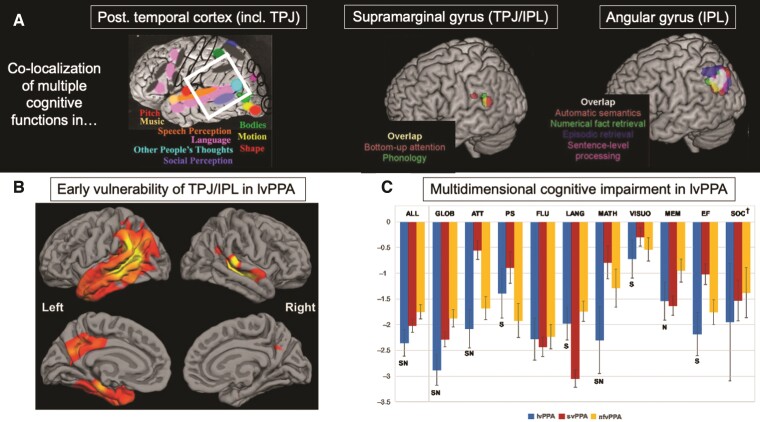Figure 1.
Graphical summary of the main premise of this Review. (A) Insights from cognitive neuroscience indicate that the left posterior temporal cortices (including superior/middle/inferior temporal gyrus and TPJ; together, denoted within the white square) (reprinted from Kanwisher40) and left supramarginal and angular gyri (components of the IPL) (reprinted from Humphreys and Lambon Ralph28) support multiple cognitive functions, possibly through deployment of domain-general and domain-selective computations. These computations support phonology and working memory, episodic and semantic memory, social and numerical cognition, visuospatial and executive abilities, as well as attention and praxis functions. (B) lvPPA targets left posterior temporal and TPJ/IPL regions (depicted here as reduced cortical thickness, i.e. warmer colours) suggesting the aforementioned cognitive functions dependent on TPJ/IPL functionality should be affected (reprinted from Leyton et al.11 with permission from IOS Press). (C) A recent meta-analysis of neuropsychological performance in 663 lvPPA patients (across 51 studies) found significant performance deficits across standardized neuropsychological measures of episodic memory, social and numerical cognition, executive functions, and attention in lvPPA relative to nfvPPA (‘N’ in figure) and svPPA (‘S’ in figure) groups (reprinted from Kamath et al.21 with permission from Cambridge University Press), showcasing the multidimensional cognitive profile of this syndrome.

